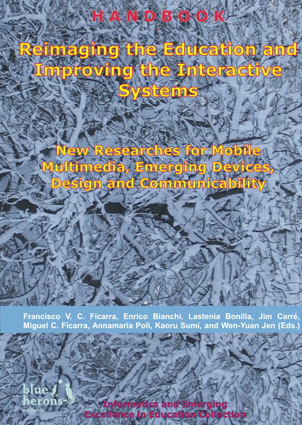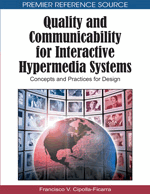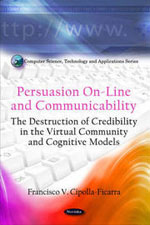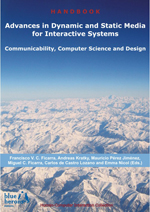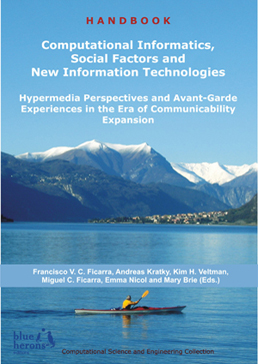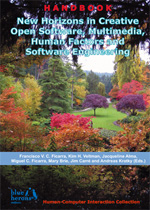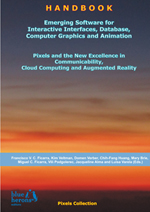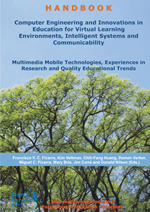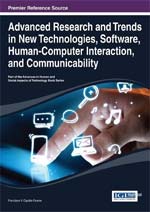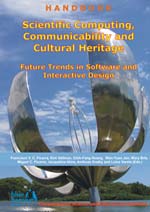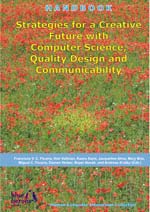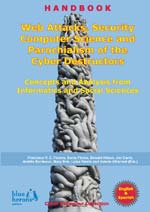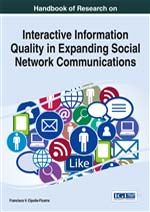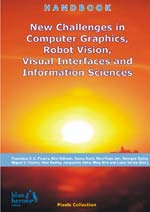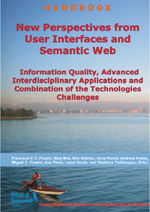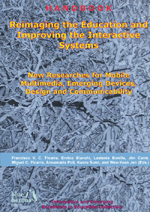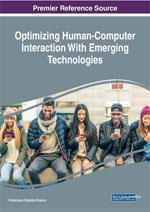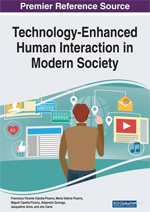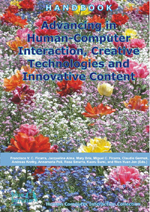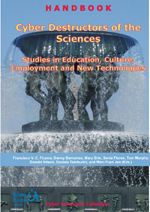Reimaging the Education and Improving the Interactive Systems: New Researches for Mobile Multimedia, Emerging Devices, Design and Communicability
:: Informatics and Emerging Excellence in Education Collection ::
:: Revised Selected Chapters ::
Main Editor: Francisco V. C. Ficarra
Co-editors: Enrico Bianchi (Como, Italy), Lastenia Bonilla (San José, Costa Rica), Jim Carré (Willemstad, Curaçao), Miguel C. Ficarra (Spain and Italy), Annamaria Poli ((Milan, Italy), Kaoru Sumi (Hakodate, Japan), and Wen-Yuan Jen (Miaoli, Taiwan)
Editorial Assistants: Mary Brie (La Valetta, Malta) and Luisa Varela (Perpignan, France)
Book Details
• ISBN: 978-88-96471-48-7 :: DOI: 10.978.8896471/487
• Publisher: Blue Herons Editions
• Location: Italy (Bg)
• Subjects: Communicability, Software, Quality, Design, Diorama, New Technologies, R&D
• Subjects: Education, Evaluation, Interactive Systems, 3D, Hardware, Algorithm, New Media
• Subjects: Mixed Reality, Social Web, Influencers, Cyber Behaviour, Legislation, 'G' Factor
• Subjects: Computer Graphics, University Social Responsibility, Museum, IoT, Beauty, ICT
• Subjects: Simulation, Management, Social Networking, University Competencies, Usability
• Subjects: Audio-visual, Tourism, Film, Cultural & Natural Heritage, Methodologies, Interface
• Subjects: Storytelling, Mobile Multimedia, Testing, Sub-graph Matching, Semiotics, AR, VR
• Subjects: Web 3.0, Fault Localization, Analysis Guidelines, Semantic Faults, UX, Creativity
• Copyright: 2016
• Collection: Informatics and Emerging Excellence in Education
• Series volume: II
• Publication date: December, 2016
• Binding: Paperback
• Grade level: General
• Language: English
• Illustrations: Yes
• Colour: Yes
• Pages: 200
• Dimensions: 11.41x8.26x0.4 in. 1.22 lbs. :: 290x210x13 mm. 556 gr.
Preface
If you can dream it, you can do it.
Walt Disney (1901 – 1966)
Since the 20th century, the technological breakthroughs in the classrooms were supposed to increase the quality of the educational process. In the theoretical-practical context (education, computer science and internet) we can briefly point at some researchers and/or entrepreneurs such as Donald Watts Davies, Paul Baran, Noam Chomsky, Marvin Minsky, Seymour Papert, Bill Gates, Steve Jobs, etc. First it was the inclusion of computers in the educational institutions until reaching each one of the classrooms. Later on it was about providing each student with a computer.
A myriad national and international projects have been carried out all across our planet in the last quarter of a century. Currently we have the multimedia mobile phone as a device of great dissemination and use among millions of students.
Those are goals which entail having a wide vision not only of the present but also for the future in the short, mid and long term. Goals related to the new techniques and paradigms for the representation of information and knowledge. All of this entails facilitating tasks whether it is in locating the information as well as integrating it and sharing it among different types of potential users, to mention some of them.
These tasks entail the continuous intersection of the formal and factual sciences, where there are disciplines belonging to software engineering, the interactive design of user interfaces, the databases, the information architecture, etc. In short, a variegated set of domains, fields and specialities as it can be seen in the listing of the main subjects, without excluding others of great interest or impact, of those research works which will make up the core content of the current book.
Besides, some contributions collected in the book have been evaluated and corrected prior to publication in an anonymous way by an international scientific committee. In some cases, said studies have been put forward orally (papers, short papers, research-in-progress, posters, etc.), with their corresponding demos, that is, accompanied with practical/theoretical cases in international conferences, workshops and symposiums such as: MSIVISM (International Conference on Multimedia, Scientific Information and Visualization for Information Systems and Metrics), SETECEC (International Conference on Software and Emerging Technologies for Education, Culture, Entertainment, and Commerce), CCGIDIS (International Symposium on Communicability, Computer Graphics and Innovative Design For Interactive Systems), HIASCIT (International Conference on Horizons for Information Architecture, Security and Cloud Intelligent Technology), HCITOCH (International Workshop on Human-Computer Interaction, Tourism and Cultural Heritage), ADNTIIC (International Conference on Advances in New Technologies, Interactive Interfaces and Communicability), HCITISI (Argentine Conference on Human-Computer Interaction, Telecommunications, Informatics and Scientific Information), RDINIDR (International Conference on Research and Development in Imaging, Nanotechnology, Industrial Design and Robotics), and ESIHISE (International Conference on Evolution of the Sciences, Informatics, Human Integration and Scientific Education). Here is a brief summary of the chapters in this handbook:
The authors of the research work called “Digital Diorama: An Interactive Multimedia Resource for Learning the Life Sciences” are Annamaria Poli, Annastella Gambini, Antonella Pezzotti, and Alfredo Broglia. The main objective of Digital Diorama is to increase the interest of the study of science by students and users in general. It is a multimedia system that reproduces a series of Natural History Museum dioramas, using diverse last generation electronic devices. Through a detailed and didactic explanation in each of its sections and accompanied by images and diagrams, the reader can understand the details of the multimedia project. They also present a set of results related to natural science, user experience, interactive design, collaborative learning, among other areas of great impact in the field of social sciences and new technologies.
Selene Uras, Teresa Consiglio, and Gerrit van der Veer are the three authors of the research work that have been titled “Keeping Cultural Heritage Alive –Opportunities with ICT.” In it, they reflect on the passage of time of the objects generated by the human being, their meaning, the place they occupy in the community, their functionalities, etc. and how they all shape the cultural heritage. In this evolution, the contributions they can receive through the devices of the new technologies are made known, not only for the safeguarding of culture, but also to promote the transfer of these cultural assets between the different generations. People that may be related to the community of belonging or not, but all of them are users or potential users, of interactive information technologies oriented to cultural heritage, for example.
In the “Digital Cultural Experiences: A Step towards Understanding the Public Needs” chapter, Jacqueline Floch and Shanshan Jiang make a very interesting combination between theory and experiments related to cultural heritage, digital cultural experiences, audience study, mobile cultural discovery, storytelling, among other areas of study. Precisely it is the aspect of immersive multimedia technologies, mixed reality, 3D virtual environments that are some of the technical aspects addressed by the two authors. At the same time, they carry out a series of heuristic experiments and evaluations (interviews, questionnaires, etc.), with a high number of users of interactive systems in Trondheim, Norway. The conclusions obtained by the authors of this chapter are of great impact for the results obtained. In other words, it is a research work where there is an intersection between quantitative data and qualitative information, as well as interesting tips to follow or a kind of guide when you are investigating or introducing digital support for cultural discovery.
Under the title of “Relieving University Competitions Drives to the Success at the RSU's Construction”, its authors Sylvia V. Poncio, Pablo Contesti, and Leandro Gardenal, highlight the importance of building academic content to be transmitted to students. This logical and normal vision for an educational, creative and original process of the universities, escapes the sad reality prevailing in countless educational centers. For example, in the shores of the Mediterranean Sea, where “copy and paste” is a sport practiced with immunity for decades, even by those networks that call themselves European educational excellence. Consequently, its authors present and develop throughout the text, in a didactic and successful manner, the following premises and/or actions: the survey of university competencies, social responsibility and technology, as enablers to give them self-initiative on the search of solutions, to existing social situations during professional practice. Therefore, some of the keywords that can guide the reader are university social responsibility (RSU), management, university competencies, educational service, and collaborative work.
Francisco V. C. Ficarra is the author of the research work “Designing Intelligence Influencers: Social Web and Beauty” shows how social networking are promoting the phenomenon of the ‘dynamic persuader’ or ‘influencers’ based on the distortion of the veracity of online information, and using for that purpose the notion of narcissism or beauty. A series of real examples, collected over a quarter of a century in the universities, the Old and New World, reveal how certain power groups are designing intelligence influencers. The present study focuses mainly on the educational field, university reforms, the rise of the social networks and mobile multimedia technologies. Simultaneously, the main negative consequences are analyzed from an economic-sociological perspective, such as the loss of competitiveness within the framework of technological innovation in research and in international trade in the medium and long term. In addition, some of the strategies used by these influencers to attract followers to their power groups are established, especially in the context of the human-computer interaction and other areas related to it.
“Analyzing Methodologies to Generate Functional-specification-based Tests” is the chapter made by Silvia Sánchez-Zuaín, Beatriz Fernández-Reuter, David Cheein, Fernando Leturia, Stefano Trejo. In said research, its authors highlight the importance of analysis in software to increase the quality of applications. One of the objectives of software engineering is to increase the quality of systems, including studies related to real users, from the '90s with usability engineering, to communicability in the 21st century. The chapter begins with a detailed state-of-the-art, and where the research tasks that can be summarized as follows are set: methodology selection; real case selection; analysis guidelines selection; methodologies comparison; analysis of results obtained; advantages and determination. Throughout the pages, the reader will find an ample number of tables and graphs, that facilitate the comprehension of the wide, precise and rigorous work that their authors have done. Finally, it is necessary to point out that the results obtained in the experiments carried out have allowed them to improve their work dynamics in order to generate a kind of guidelines with the positive and negative aspects of each of the methodologies that have been studied.
In the research “Supporting Acting Performances Through Mixed Reality and Virtual Environments”, Daniel Kade, Rikard Lindell, Hakan Ürey, and Oguzhan Özcan demonstrate the validity of the topics related to mixed reality applications, motion capture, acting support, head-mounted projection display, among others, highly relevant, in the ICT sector. After an introduction where they present the main objectives of this work, they present the central axis of the prototype they have made, that is, to head-mounted projection display as support for motion capture actors. The prototype is described exhaustively, either from the electronic point of view or functionally, resorting to the use of a mobile phone. The authors of the research have also made a series of experiments with real users. The conclusions are of great value, especially in the field of audiovisual communication that uses computer animations, for example. In this regard, it should be noted that the lessons learned and future lines of research are very valid, especially for those readers interested in the evolution of new technologies, with moderate costs and high quality services.
Limei Jia, Li Li, and Jie Luo are the authors of a research paper that they have decided to call “An Approach for Automatic Localization of Pointer Related Semantic Faults.” It is a complete work, both from a theoretical and an experimental point of view. Some of its main research areas can be located through the following terms: pointer related faults, fault localization, constraint solving, SPARQL, sub-graph matching, for example. Terms that highlight from the beginning of the chapter the purpose of their authors to present an algorithm for locating pointer related semantic faults in C programs by combining a semantic debugging method with sub-graph matching. An chapter that is shown structurally perfect, especially at the time of presenting the experiments carried out. That is, the authors perform some experiments and these show that the algorithm is feasible and that it helps to improve the efficiency of software development and save debugging time. The results of these experiments can be analyzed in detail in the extensive tables that are attached. Within the structure of the chapter are sections such as: Problem analysis; Sub-graph matching based pointer faults localization; experiment and evaluation, related and future works.
“Collaborative Recommendation for e-Tourism: New Algorithm” is the title with which its authors –Firas Ben Kharrat, Aymen Elkhlifi and Rim Faiz, have carried out the research, focused on the following main topics: recommendation system, tourism recommendation, collaborative filtering, and machine learning. The research work has been structured as follows: related works, central approach of the problem to be solved and the paths to follow for its resolution; implementation and detailed explanation of the algorithm developed by the authors, together with a set of examples; experiments to demonstrate the potentiality of the algorithm developed. In this sense, a series of graphs are presented with the results obtained. The work closes in an exemplary manner with a related work, conclusions and future work.
The two authors Victor TiȚa and Nicolae Bold have chosen the title of “Approaches and Network Issues within Modelling the Economic Environment of a Local Market in a Form of an Economic Map” for their research work. It highlights the factors of the real economy in certain geographical areas of the interior of Romania (Şerbăneşti). In the study, they also made the simulation of this system by artificially creating enterprises. For example, in the economical map of Şerbăneşti it is possible to detect the location of the enterprises; the relations between enterprises; the relation modeled after the roads in the village, etc. The model proposed by the authors can be used in a company, so its importance is greater, and because a system can be a unit in a larger system (there can be formed systems from subsystems that can also be formed from other sub -subsystems and so on). The combination of graphics, tables, maps and photographs are very well considered resources because they raise the didactic level of the content of this chapter. Also, the structuring of the different sections and the progressive and gradual development of the content are suitable for such purposes.
The author of the chapter “Films and Multimedia Systems for International and Local Tourism” is Francisco V. C. Ficarra and its main objective is to highlight the function of video in the interactive systems which have survived the passage of time. The universe of study includes the first commercial off-line, multimedia and hypermedia systems, until the emergence of the Internet, in the mid-1990s, and the current interactive systems through mobile multimedia telephony. The evaluation focuses on interactive design, whose contents are directly related to tourism and, exceptionally, with the promotion of cultural and natural heritage. Through techniques and methods for the heuristic evaluation of interactive systems, the evolution of these contents in video format has been examined, up to the current professional promotion of audiovisual content of tourism in several European cities. Finally, the first evaluation results of the films are presented, in the interactive systems, that have been generated for the users in general, from the offices or official tourism agencies located in the European Union.
Francisco V. C. Ficarra
Fuerteventura, Spain (December 2016)
Partial Content On-line (pdf format)
• Front Cover (here)
• Preface :: Acknowledgment (here)
• Chapters :: Final Remarks :: Author Index :: Keywords Index :: References ... (here)
• Back Cover (here)
Additonal Handook Info
• Only paper copy – no digital book on-line and/or off-line –
• Special Price € 95 (expedition cost not included) ... e-Commerce :: Info Form
Welcome to Blue Herons Editions!
The origin of this publishing project is to be found in the Canadian lands, where nature presents itself generous in many places of its wide geography. More...
Education, Communicability, Design, Computer Science, HCI, Computer Graphics and Computer Animation:
We focus on education and new technologies with 36 years long experience. More...
Literature and Journalism:
Intersection between universal literature, local new journalism (true stories), sociology and legal immunity. Two collections:
- Casoncelli Bergamaschi
It is a typical bergamasque dough filled with meat, similar to the raviolis. More...
- Menjar Blanc & Black
It is a typical sweet of the Catalan coast and the Balearic Islands. More...
Others Releases:
See all others new releases in books, CD, DVD, etc. More ...
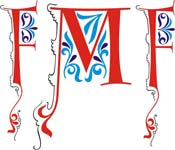
Call for Papers, Short Papers, Posters, Demos, Research-in-Progress, Workshops, Doctoral Consortium, Hardware & Software Companies - Didactic Demos Sessions ...
ADNTIIC 2018 :: HCITOCH 2019 :: SETECEC 2019 :: HIASCIT 2019 :: CCGIDIS 2019 :: IPCTIIC 2018 | HCITISI 2018 :: MSIVISM 2019 :: RDINIDR 2018 :: ESIHISE 2018 :: HCIHEART 2019 :: QUITANS 2019

